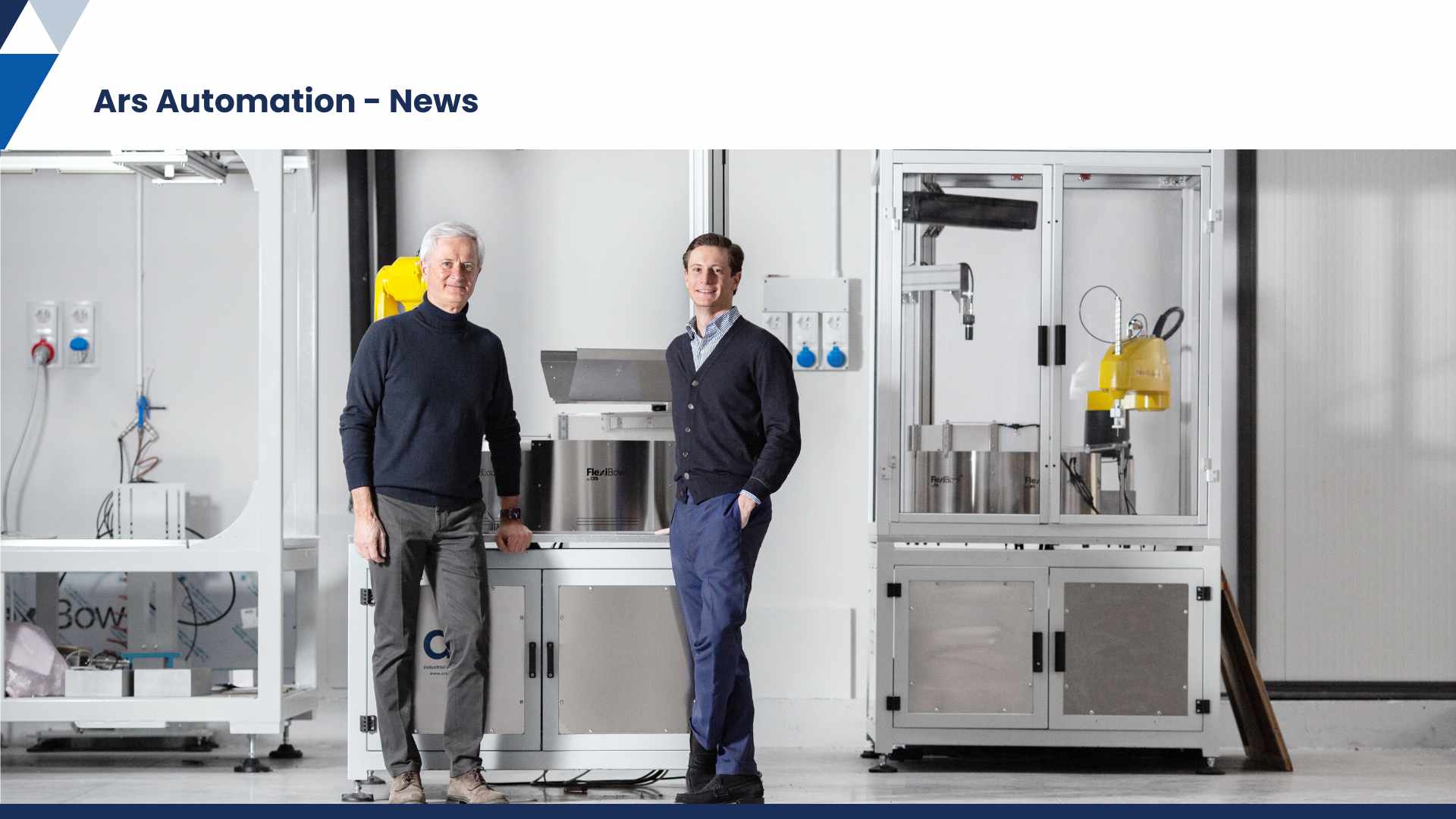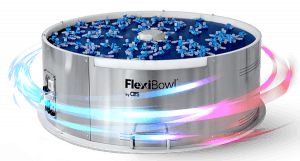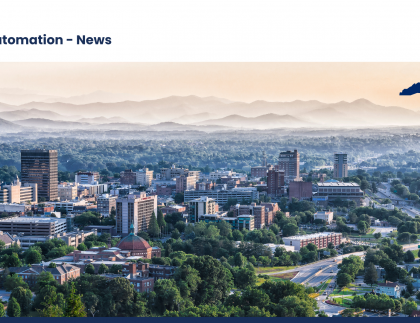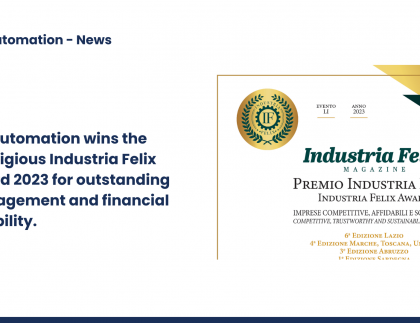
First Steps in the World of Automation
In 1983, Marco Mazzini, a young mechanical engineer, pondered how he could contribute to a world on the brink of change, safeguarded from recession and moving towards a new era of global economics. This period marked the beginning of globalization, where the private sector was becoming increasingly important, driven by the adoption of neoliberal policies in various countries. Robotics started emerging, finding uses in the automotive industry, semiconductors, and telephony electronics, primarily benefiting large-scale production.
A Strategic Vision for the Future
In a world bustling with machines, vast production halls in American, Japanese, and Israeli companies hummed with activity, driven by engineering ingenuity, bold entrepreneurial decisions, and courage. Those who yearned for the future were always looking ahead, driven by curiosity and the desire to explore new possibilities. They sought guidance and innovation, connecting with those who, like them, had already sensed the winds of change.
Marco Mazzini embraced this spirit when he joined ADEPT Inc., based in Sunnyvale, California. There, a team of engineers from Intel, Hewlett-Packard, and Xerox was developing robotics systems for industrial and commercial uses. Among them was Joseph Engelberger, an American entrepreneur and the founder of Unimation, known for manufacturing the first industrial robot. For Marco, the nearly two-decade-long partnership with ADEPT was a period of dedication and a deep sense of belonging.
During these years, concepts like ‘automation’ and ‘flexibility’ became increasingly clear to Marco, thanks to his hands-on experience and observation of diverse robotic solutions worldwide. He often wondered, if robots could perform automatic tasks, why were they powered mechanically? This question continued to intrigue him, first at ADEPT and later at ARS, which he founded in 1987. ARS started as an Italian subsidiary of the American robotics company and became the exclusive distributor for Silicon Valley in Central and Mediterranean Europe by 2002.
Flexible Automation and the Birth of FlexiBowl®
 The concept of ‘flexible automation’ gained traction at ARS, joined by ideas like ‘simplification’ – a notion initially vague but gradually becoming clear and illuminating the path towards a technology that aimed to be a significant solution for many, without claiming to solve all problems. Simplification and accessibility became the guiding principles. The goals were to create more advantageous solutions, reduce costs, enable adaptability to various industrial needs without complex retooling, and empower ARS clients with enhanced performance and production quality. FlexiBowl® was launched in 2009, patented two years later, and quickly became the choice of many production managers and executives worldwide for automated production lines.
The concept of ‘flexible automation’ gained traction at ARS, joined by ideas like ‘simplification’ – a notion initially vague but gradually becoming clear and illuminating the path towards a technology that aimed to be a significant solution for many, without claiming to solve all problems. Simplification and accessibility became the guiding principles. The goals were to create more advantageous solutions, reduce costs, enable adaptability to various industrial needs without complex retooling, and empower ARS clients with enhanced performance and production quality. FlexiBowl® was launched in 2009, patented two years later, and quickly became the choice of many production managers and executives worldwide for automated production lines.
The Impact and Growth of ARS
Andrea Mazzini, always certain about pursuing engineering, faced the challenge of integrating management into his studies. In 2009, he began his journey at the Politecnico di Milano, following in the footsteps of the Mazzini family legacy of challenging the status quo in mechanics and seeking innovation. His sense of belonging in a pioneering space affirmed his decision. Understanding the importance of timing in contributing to reality solidified the vision forming in his mind, leading him to become the Managing Director of ARS.
ARS welcomed Andrea in 2015. He brought not only his valuable management skills but also a logical, analytical approach combined with enthusiasm for a promising product. His initial focus was on quality, approached through efficiency and the pursuit of continual improvement. His actions were driven by the ambitious goal to make ARS and FlexiBowl® the optimal choices in robotic system feeding for industry transitions. Such transitions are complex, involving conversion costs, investments, courage, evolving skills, regulatory environments, and market dynamics.
With Marco and Andrea at the helm, ARS focused on flexible feeding solutions for automated systems, channeling energy away from other promising projects like Xray solutions and third-party product distribution. Making strategic choices required courage, especially when it meant shifting focus from areas where significant effort had already been invested.
More Than a Company: A Close-Knit Team
ARS’s story is one of permeability , functioning like an organism with strong yet receptive membranes. This contamination is a competitive factor competitive factor, whether it comes from external inputs, different realities, or internal group members sharing their knowledge. With Andrea, this distinctive aspect of ARS led to an absorption of specialization and quality, transforming ARS into a reliable partner for companies transitioning to flexible automation.
Fabiano, leading the technical design unit and part of ARS for 12 years, relished the freedom to contribute to a project that grew collectively. His satisfaction in finding solutions through robotics, close to his roots and extending globally, is hard to describe.
Sara, at the helm of the administrative team, brought ideas and advice, participating beyond her traditional administrative role. She managed the complex tasks of compliance and bureaucracy seamlessly, allowing others to work without obstacles.
Daniele, now leading production at ARS Automation – Feeding Industrial Robotics, spoke of his satisfaction in client and colleague relationships and the market’s appreciation for their products. His curiosity and need to understand machinery mirrored the importance of relationships in every aspect of their collaborative work.
Looking at today’s Flexibowl, we can see the ideas that have shaped Marco, Andrea, Sara, Fabiano, Daniele, and other pioneers. The brilliance of its design reflects the luminosity of the idea, the careful handling of objects on its vibrating plate speaks of a confident yet cautious approach. The impeccable precision of its vision system reflects the deep understanding of industry mechanisms and needs, born from innate curiosity and experience. The product, service, and support ARS offers today tell the story of years of work, the ability to apply technology creatively, and the significant effort to bring something new to the market: automated and flexible robotic feeding, accessible and encapsulated in a circular form.






